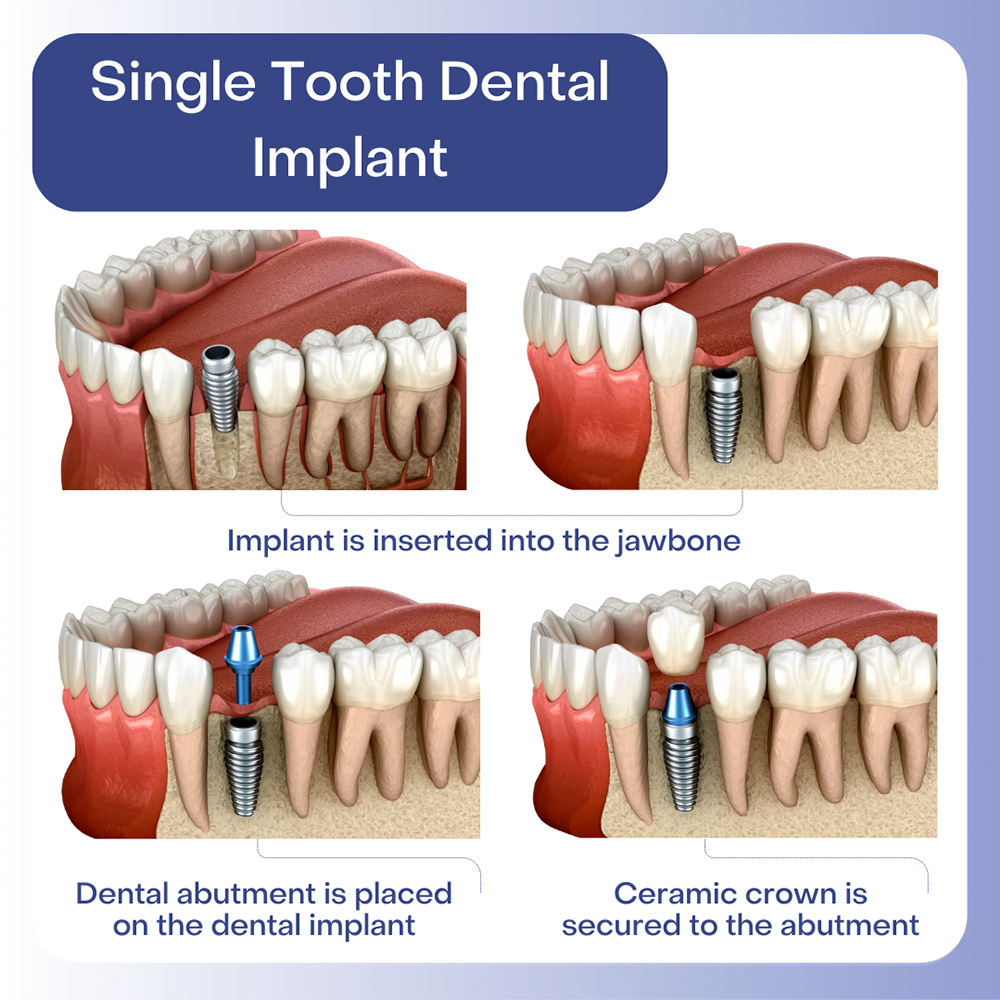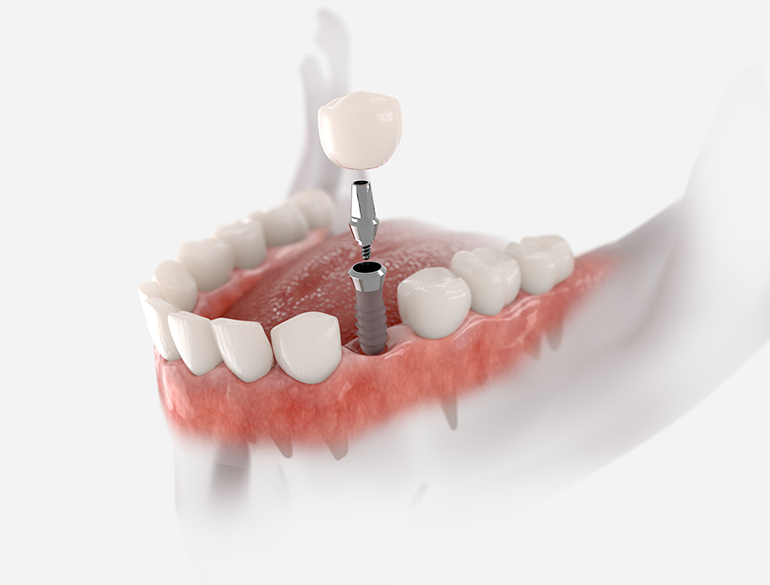Dental Sense for Dummies
Dental Sense for Dummies
Blog Article
The 4-Minute Rule for Dental Sense
Table of ContentsDental Sense Things To Know Before You Get ThisSee This Report about Dental SenseWhat Does Dental Sense Mean?Fascination About Dental Sense
are medical gadgets surgically dental implanted into the jaw to recover an individual's ability to chew or their appearance. They give support for man-made (phony) teeth, such as crowns, bridges, or dentures. When a tooth is lost because of injury or illness, a person can experience issues such as quick bone loss, faulty speech, or changes to chewing patterns that cause pain.Oral implant systems include a dental implant body and oral implant abutment and may also consist of a joint fixation screw. Dental implant vs bridge. The dental implant body is operatively inserted in the jawbone instead of the tooth's root. The dental implant joint is generally connected to the implant body by the abutment fixation screw and expands through gum tissues right into the mouth to sustain the connected artificial teeth
(https://dentalsense1.creator-spring.com)Structure of The Oral Implant System picking dental implants, speak to your oral copyright regarding the possible advantages and threats, and whether you are a candidate for the procedure. Points to take into consideration: Your overall health is an essential variable in identifying whether you are a good candidate for dental implants, the length of time it will certainly take to recover, and how much time the implant may remain in place.
Smoking may influence the recovery process and reduce the long-lasting success of the implant. The healing procedure for the dental implant body may take a number of months or longer, during which time you usually have a momentary abutment in area of the tooth. the oral implant procedure: Very carefully follow the oral health guidelines provided to you by your oral copyright.
All about Dental Sense
Implant failure can result in the need for one more operation to take care of or change the implant system. Restores the capability to chew Brings back aesthetic appearance Aids maintain the jawbone from diminishing as a result of bone loss Preserves the wellness of the bordering bone and periodontals Aids maintain adjacent (neighboring) teeth steady Enhances lifestyle Damage to surrounding natural teeth during dental implant positioning Injury to the surrounding tissues throughout surgical treatment, such as sinus opening Injury during surgical treatment (for instance, crack of surrounding jawbone) Insufficient function, such as really feeling like the teeth do not attack with each other generally A feeling that the tooth hangs or twisting in place arising from a joint screw loosening up Implant body failing (looseness of the dental implant body) because of systemic infection, which may be most likely in people with unchecked diabetes because of neighborhood infection in bone and gum tissues supporting the implant body due to delayed healing, which may be extra most likely in individuals that smoke Trouble cleaning the periodontals around the implant, resulting in bad dental health Untreated gum condition Post-surgical numbness because of nerve impingement or damages Constantly notify healthcare companies and imaging technicians that you have oral implants prior to any magnetic resonance imaging (MRI) or x-ray procedures.
FDA is not familiar with any type of negative occasions reported for MRI or x-ray treatments with dental implants. Dental implants systems are normally made of materials that follow global agreement requirements of the International Organization for Standardization (ISO) or ASTM International. These requirements have details of what makes a risk-free material.

A dental implant is a structure that replaces a missing tooth. With screw-like devices, the specialist inserts an implant right into the jawbone, and it functions as an anchor for an artificial tooth, called a crown. A device called a joint links the man-made tooth to the dental implant. The crown is custom-made to fit the individual's mouth and match the shade of their teeth.
The Definitive Guide to Dental Sense
Some individuals are not qualified for dental implant surgical procedure. It is for dental surgeons to operate individuals with: severe illnessuncontrollable metabolic diseasebone or soft cells disease or infectionIf these problems are dealt with, an individual can have the surgery. In, oral doctors avoid from operating on people with: If people with any one of the above go through dental implant surgical treatment, there is a higher risk of the implant stopping working.

Oral implant surgical article procedure is a personalized process. It's not the same for every person. But the complying with provides a basic review of what you can anticipate your dentist, oral surgeon, periodontist or prosthodontist to do: Put the implant surgically. Give you time to heal. Affix the article and last crown, bridge or denture.
Next off, your surgeon will very carefully place the oral implant right into your jaw. Finally, your surgeon will rearrange your gums and close the laceration with stitches. If your dental implant is near the front of your mouth, your dental practitioner will make a short-term tooth for you to use until you heal. This way, you will not have a void in your smile while you recoup.
Not known Details About Dental Sense
Throughout the healing stage, your jawbone needs to fuse to the oral implant. This procedure can take anywhere from 3 to nine months.
As soon as your dental implant heals, your dental expert can affix the abutment (tiny adapter article) and your last repair (crown, bridge or denture). This usually takes concerning one hour to finish and might call for a second minor surgical treatment. You should not really feel any discomfort during your oral implant treatment since your copyright will utilize medicine to numb your gums.
Report this page